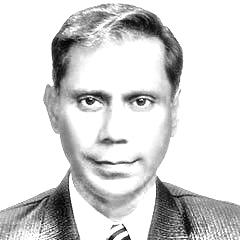May 4 was the Yaum-e-Shahadat of Tipu Sultan, the ruler of the Kingdom of Mysore in South India. He introduced a number of administrative innovations during his rule, including a new coinage system and calendar, and a new land revenue system which initiated the growth of the Mysore silk industry. Tipu Sultan fought numerous battles against the British and rival kingdoms. He was a pioneer of rocket artillery and expanded the iron-cased Mysorean rockets and commissioned the military manual Fathul Mujahidin.
Napoleon Bonaparte, the French commander-in-chief, sought an alliance with Tipu Sultan. Both Tipu Sultan and his father used their French-trained army in alliance with the French in their struggle with the British, and in Mysore’s struggles with other surrounding powers.
Rockets had been used in warfare since the 13th century. The Chinese had used them to defend themselves against Mongol invaders, the Mughals frequently used them on the battlefield and the Europeans had started experimenting with them by the 15th century. However, these rockets were built with flimsy materials like cardboard and were not very effective in inflicting damage on the enemy, similar to modern-day firecrackers. Thus, their use as a weapon had been discarded in favour of cannons and other forms of artillery.
Tipu Sultan developed war rockets with an important change: the use of metal cylinders to contain the combustion powder. Although the hammered soft iron he used was crude, the bursting strength of the container of black powder was much higher. Thus a greater internal pressure was possible, with a resultant greater thrust of the propulsive jet. The rocket body was lashed with leather thongs to a long bamboo stick providing it a range of more than a kilometer.
Tipu Sultan fought numerous battles against the British and rival kingdoms. He was a pioneer of rocket artillery and expanded the iron-cased Mysorean rockets and commissioned the military manual Fathul Mujahidin
During the Anglo-Mysore wars of the late 1700s, Mysorean rockets were used by Tipu to great effect. Especially during the Battle of Pollilur (the Second Anglo-Mysore War in 1780), when a devastating barrage by Tipu’s rocket corps set fire to the East India Company’s ammunition dumps to hand the British army one of its worst ever defeats in India. The shocked British infantry had never seen the likes of them before and quite literally didn’t know what hit them. Such was their fear and confusion that British soldiers would go on to describe the iron tubes of gunpowder mounted on swords of Tipu’s army as “flying plagues”. Major Dirom, who was the deputy adjutant general of British forces in India in 1793, later described the rockets used by the Mysorean army thus: “Some of the rockets had a chamber, and burst like shells; others, called ground rockets, had a serpentine motion, and on striking the ground, rose again, and bounded along till their force be spent.”
Tipu’s famous rockets, which had wreaked havoc on the British troops in war against them in the 17th Century in an attempt to rout the East India Company from India, caused them to resort to deceit and treachery. Mir Sadiq, a Minister in Tipu’s cabinet was coerced into betrayal. During the Fourth Anglo-Mysore War in 1798–99, he allegedly let down Tipu Sultan during the Siege of Seringaptam, paving the way for a British victory.
When the British infiltrated the heavily fortified city walls through the safe passage provided by Mir Sadiq, his French military advisers told Tipu Sultan to escape via secret passages and to fight the rest of the wars from other forts, but he refused, making his historical comment: “It is far better to live like a lion for a day than to live like a jackal for a hundred years.” After Tipu embraced Shahadat in the battle of Seringapatam in 1799, the British captured more than 700 rockets and subsystems of 900 rockets and took them to England and through “reverse engineering” made copies that were later used successfully in naval attack on Boulogne (1806), siege of Copenhagen (1807) and also against Fort Washington (New York) during the American War of Independence. Two specimens of Tipu’s rockets are still preserved at the Royal Artillery Museum in Woolwich.
Tipu is hailed as the pioneer of the Indian Missile development programme and India’s pioneering missile development programme chief and former President, APJ Abdul Kalam was fascinated by Seringapatam’s historic connection with modern missiles. During his tenure as President, he was keen on preserving the Rocket Court (the laboratory where Tipu tested his rockets) and developing it as a museum — an idea that found mention in his book ‘Wings of Fire‘. NASA’s flight facility at Wallop Island, Virginia, USA also prominently displays a painting depicting the battle and use of the rockets.
The legend of Tipu Sultan continues to live on. The ‘Tiger of Mysore’ posed one of the strongest military challenges ever faced by the British in the sub-continent, ultimately laying down his life fighting them.
The writer, a retired Group Captain of the PAF, is a columnist, analyst and TV talk show host. He has authored multiple books on current affairs, particularly on China. He can be reached at sultanm.hali@gmail.com
